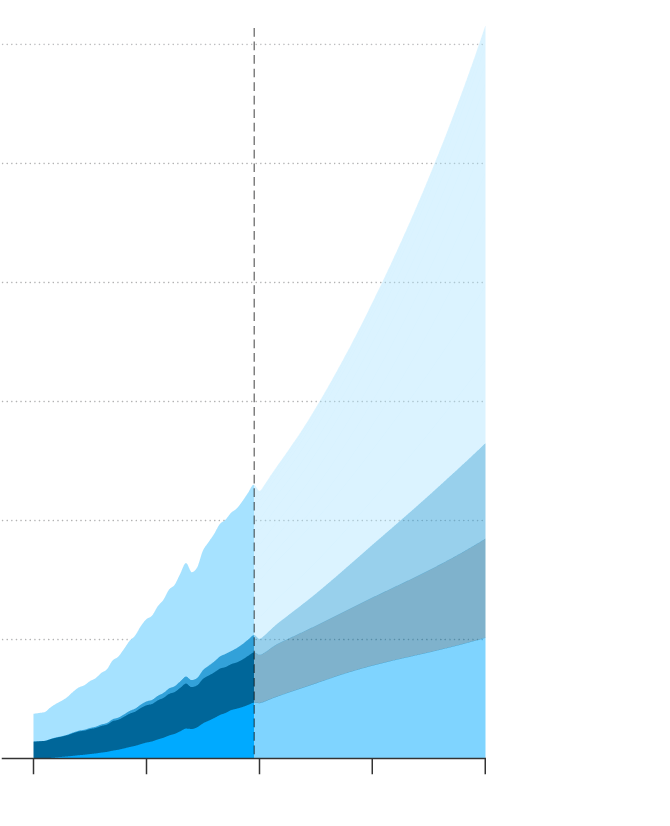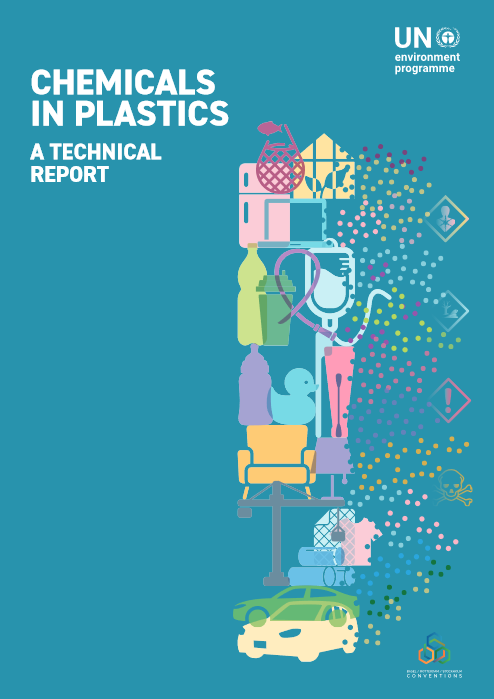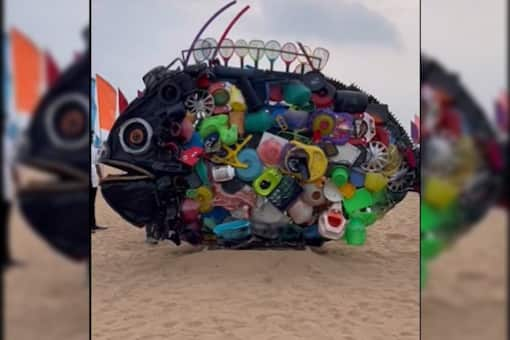EPA brandished its powers to regulate new drinking water contaminants earlier this year, but many question whether the agency will apply the same approach to other chemicals.
While substances linked to health risks from kidney disease to cancer have cropped up in drinking water systems for decades, the agency has not issued a drinking water standard for a new contaminant on its own initiative since 1996. Other drinking water regulations since then have been mandated by Congress.
But EPA in March took the dramatic step of escalating a crackdown on a handful of “forever chemicals,” with a proposal to regulate those notorious substances at very low levels.
Advertisement
On the heels of that rare move, advocates remain largely skeptical of future drinking water regulatory developments and note impediments EPA faces in doing so.
“I am not sure that a single rulemaking in 27 years signals a huge sea change in EPA’s plans to regulate new contaminants,” said Erik Olson, a senior strategic director working on health issues for the Natural Resources Defense Council.
Olson called EPA’s recent decision targeting PFAS “historic and welcome,” but noted the agency’s storied tendency to slow-walk drinking water actions.
Melanie Benesh, vice president of government affairs for the Environmental Working Group, shared similar sentiments even as she offered that some of the pacing is due to the structure of the Safe Drinking Water Act, or SDWA, which “does create this long process.”
Cost considerations can make it hard to act, as can monitoring requirements. But regulators also play a big role in setting the urgency level around a decision.
“EPA does not move very aggressively or very quickly on these contaminants,” Benesh said, while adding that the agency is taking per- and polyfluoroalkyl substances seriously. “It’s good they’re recognizing that they have that authority. But historically that certainly has not been the case.”
EPA did not respond to multiple inquiries relating to this story. But the agency’s recent move has offered ammunition for regulatory proponents, who say it underscores the power regulators have.
And that power can run deep. Of the broader PFAS family, EPA is seeking to regulate two cancer-linked chemicals, PFOA and PFOS, at the lowest levels a lab can measure: 4 parts per trillion. Another four compounds would be regulated as a mixture, with a hazard index calculation applied to determine the risks they pose.
That proposal has drawn cost concerns from water utilities and fury from the chemical industry. On the other end, many water policy watchers say sweeping regulatory actions can be essential for safeguarding public health and want to see the same urgency applied to chemicals beyond PFAS — even as they remain dubious that it will happen.
‘Hesitancy to regulate’
EPA’s record of hesitancy on drinking water contaminants is long established.
The bulk of U.S. water standards were set between 1986 and the late 1990s, with federal law requiring that EPA issue regulations for 83 contaminants by 1989, and subsequently for 25 new contaminants every three years after that period. But drinking water utilities struggled under that pace and Congress passed amendments to SDWA in 1996, shifting to a new system creating standards based on health implications and persistence.
In the time since, EPA has regulated some contaminants under SDWA — targeting uranium and certain disinfectants — but those moves have been pursuant to congressional mandates. Moreover, EPA’s water office has frequently been accused of having a close relationship with industry and of leaning toward a more conservative regulatory approach as a result.
“The hesitancy to regulate new drinking water contaminants is a combination of a complex and problematic statute and a lack of political will at EPA,” said Olson.
Some hurdles are also rooted in the reality of drinking water systems. Ronnie Levin, a former EPA staffer now at Harvard University’s T.H. Chan School of Public Health, noted that there are “some very legitimate reasons” why the program can be restrained when it comes to contaminants.
“They cannot be innovative because they cannot have five minutes of disrupted service without cataclysmic effects,” she said, pointing to the crises that can occur when drinking water systems are impacted by external factors.
But that approach has met its match in PFAS.
Advocates and experts offered varying perspectives on why PFAS in particular prompted regulation, but underscored that the science around those chemicals is stark. Betsy Southerland, a former water office staffer, noted that the agency chose compounds for which they had conclusive data. “EPA selected those six PFAS because they all had final toxicity values,” she said.
But many also pointed to optics: PFAS are infamous, and regulators were under immense pressure to act.
“PFAS is in the news,” said Levin. “It’s familiar. Is it the worst? Maybe, maybe not. We certainly need to get a handle on it. Anywhere we start on this continuum is good.”
Lingering fights and cost concerns
While PFAS pushed regulators into action, other chemicals have invoked less urgency.
One particularly fraught compound is perchlorate, used in explosives and rocket fuel. That substance has polluted groundwater near military and contractor facilities, with testing finding it in water, soil or sediment in as many as 45 states. An endocrine disruptor, it is particularly threatening for fetal health. And the Obama-era EPA said in 2011 that perchlorate warranted limits, even as it slow-walked addressing the issue and eventually sparked a lawsuit from NRDC.
Under Trump, EPA revoked that determination, arguing it would require monitoring at 60,000 public water systems and that state and local officials were already taking action to address the issue. The Biden administration opted to continue with that approach, finding the contamination mostly limited to a few geographic areas.
Southerland noted that EPA monitors contaminants nationwide as it weighs whether they are widespread. Perchlorate, she said, “was a classic case in which Congressional representatives pushed for regulation … EPA and [the Food and Drug Administration] spent years studying it, and then EPA determined, not once but twice, that it did not occur in enough water systems nationwide to justify regulation.”
Change could nonetheless be coming: A judge ruled in May that EPA had no right to revoke its 2011 determination, although how the agency will proceed is unclear.
Another contaminant that has drawn ire repeatedly is hexavalent chromium, which achieved notoriety due to the activism of Erin Brockovich and is used in automotive supply chains. An October EPA draft toxicological review found it was likely to be carcinogenic in drinking water. But the chemical industry has strongly fought against limits even after a major spill in Michigan last summer.
Advocates assert that federal regulators have been too slow in addressing such pollutants. Drinking water utilities, however, have more complex views on the agency’s pace.
“It’s true that the process for evaluating and regulating new contaminants can seem long, and we think additional funding for public health research would help expedite the process,” said Greg Kail, a spokesperson for the American Water Works Association. “But it’s important to get these decisions right because we don’t want to spend consumers’ dollars addressing the wrong risks.”
Kail observed that the looming PFAS regulations would impact utilities differently, ranging from more reporting requirements to “large investments for new treatment or acquiring new water sources.” While AWWA has been supportive of some federal action to avoid confusion across states, he said, the trade group wants clarity around implications for its members.
For example, while EPA estimates the annual costs associated with its regulation will be $772 million annually, at least one North Carolina utility had already faced an estimated capital cost for its PFAS treatment of $43 million prior to the proposed rule.
“It’s critical that the public health benefits outweigh the cost of implementing the regulation,” Kail said.
Tom Dobbins, CEO of the Association of Metropolitan Water Agencies, offered that ratepayers often foot the bill for removing pollution. That reality, he said, means that EPA needs to be pragmatic when it takes action.
“EPA’s science-backed regulation of contaminants is helpful to utilities because it is improving the quality of drinking water provided to the public,” Dobbins added. “EPA should craft new regulations in a way that minimizes burdens on the public while also protecting public health.”
Experts and utilities also worry that mistrust of tap water will point consumers toward bottled alternatives, particularly in underserved communities. That can raise their costs and also heighten their exposure to contaminants like microplastics.
To avoid that, water industry members pointed to other avenues EPA could use to crack down on contaminants before they ever enter drinking water, like the Toxic Substances Control Act, which regulators can use to take chemicals off the market.
“One of the most cost-effective ways to reduce health risks from contaminants is to prevent contamination in the first place,” said Dobbins.
Still, regulating some pollutants through SDWA could also have the benefit of capturing others. Benesh pointed to “co-benefits” that could come with installing filters often used for PFAS, like granular activated carbon and reverse osmosis systems. Those technologies could be put in place and pull out substances like pharmaceuticals and organic matter that could pose health hazards.
“The more you’re reducing those exposures, the greater the public health benefit is,” Benesh said.
What’s next?
While EPA’s history of inaction remains a sore subject, the crackdown on PFAS has sparked optimism.
“I will say that [current EPA leadership] have exhibited a stronger will to control PFAS and drinking water contaminants than their predecessors have for many years,” said NRDC’s Olson.
Even within the broader PFAS family of more than 10,000 compounds, however, future regulations remain an open question — although advocates agree those chemicals would be a more likely target due to ongoing national monitoring efforts.
If the agency does launch a broader campaign beyond PFAS, however, there could be a number of candidates. Some lawmakers have also pushed for a crackdown on microplastics, while a separate contender is 1,4-Dioxane, a compound used in products like shampoos and cleaning items. EPA considers the chemical to be a likely human carcinogen, and it is currently under TSCA assessment.
Also on the radar is lead, the neurotoxic heavy metal that has haunted cities like Flint, Mich. EPA plans to release a new draft of its lead and copper rule this fall, which could see stricter standards imposed. Utilities must currently take action after 10 percent of water samples exceed lead by 15 parts per billion, even though health experts agree that the only safe amount of lead exposure is none.
Water utilities say addressing lead is among their top focuses alongside PFAS. Kail of AWWA offered that the new rule will introduce a number of hurdles for water systems and that costs for lead service line replacement nationally could exceed $60 billion. Meeting the requirements of the rule will be “challenging, but achievable,” Kail added, while cautioning that further revisions from EPA will be closely analyzed by AWWA’s members.
Levin, the former EPA staffer, has spent much of her career focused on lead. She noted the long-term costs associated with exposure, which go beyond its implications for children and include cardiovascular and reproductive impacts in adults. A recent study co-authored by Levin found that EPA has dramatically undervalued the payoffs from cutting lead levels in drinking water, which would yield a minimum of $9 billion annually in benefits per that analysis.
“Those benefits are many times the costs,” Levin said, while adding that until officials underscore the benefits of a crackdown, it will be hard to justify the costs to the public.
Advocates said that regulators broadly should take a protective approach to all drinking water contaminants. “Drinking water is important,” underscored Benesh of EWG. “It should be clean, and it’s not as clean as most Americans assume it is.”
She noted that statutory challenges will remain a reality that the government has to work with. Ultimately, however, she said regulators have the power to take action, and they should do so.
“EPA needs to move more aggressively,” Benesh concluded.







